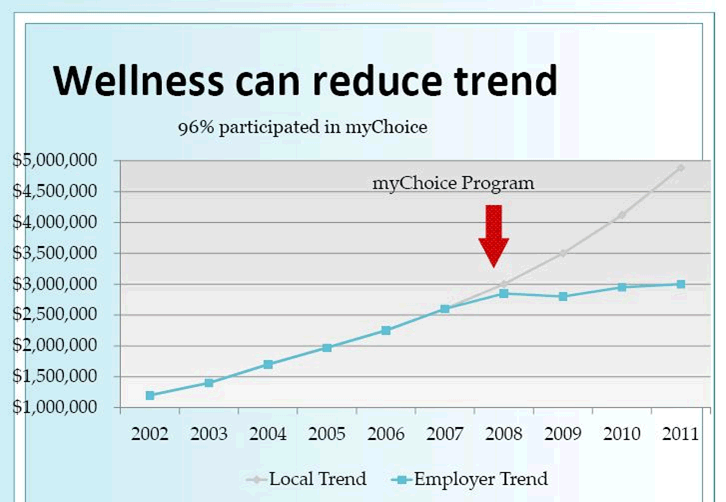First, says Ahlrichs, a consultant and business developer with Gregory & Appel in Indianapolis, Indiana, here’s just one example of why wellness is failing:

Getting more serious, Ahlrichs describes a wellness program that’s really working well.
Case Study—A New Approach to Wellness
Here was Ahlrichs’ client’s situation:
- County government
- 3,500 employees
- Mix of white and blue collar jobs
- High percentage of employees over 45
- Claims analysis revealed high medical costs from spouses
His client tried a wellness plan, but participation plateaued at 25 percent, meaning that the participants were likely those who would take steps to improve their wellness even without the program.
So the county decided to try a new approach. And here’s what the result was when they instituted the myChoice program:

Compensation.BLR.com, now thoroughly revved with easier navigation and more complete compensation information, will tell you what’s being paid right in your state–or even metropolitan area–for hundreds of jobs. Try it at no cost and get a complimentary special report. Read more.
How did they achieve such enviable numbers? They devised a plan that worked as follows:
Qualifying Events
The organization identified six wellness activities that were deemed qualifying events:
- Health risk assessment
- Biometric exam/labs
- Wellness exam
- Age-based screening
- Diabetes care
- Tobacco cessation
And then they set up three benefits plans—Basic, Silver, and Gold—with the following characteristics:
- Basic was just that, minimal coverage, deductible, and high copays.
- Silver offered better coverage and somewhat lower copays.
- Gold was a more generous plan with good coverage and even lower copays.
All the plans cost the same to the employee (that is, the payroll deduction is the same, but, of course, the Basic plan costs more during the year as more costs are borne by the employee).
All adult plans are individual. That eliminated “hiding spouses,” Ahlrichs says. (Children are handled together as a group.)
Here’s how it worked: If you did all the qualifying events, you got the Gold Plan. If you did half the list, you got the Silver Plan. And if you did fewer than half, or nothing, you got the Basic Plan.
In other words, you don’t have to pay more to get the top tier plan; you have to participate in more wellness activities to get it.
Try BLR’s all-in-one compensation website, Compensation.BLR.com®, and get a complimentary special report, Top 100 FLSA Overtime Q&As, no matter what you decide. Find out more.
The county hoped to get 30 percent to 50 percent of employees on the Gold Plan, Ahlrichs said, but they ended up with 93 percent on the Gold Plan, including spouses.
Health measures improved (for example, cholesterol levels dropped and diabetes management improved).
And the monetary results followed. Another client who did a similar program found these reductions in costs:


In tomorrow’s Advisor, more on wellness programs that work, plus an introduction to the all-things-comp and benefits-in-one-place website, Compensation.BLR.com®.

Someone recently told me that her employer stopped selling candy in the workplace vending machines–so she and a colleague had taken to bringing in candy and selling it to their coworkers.